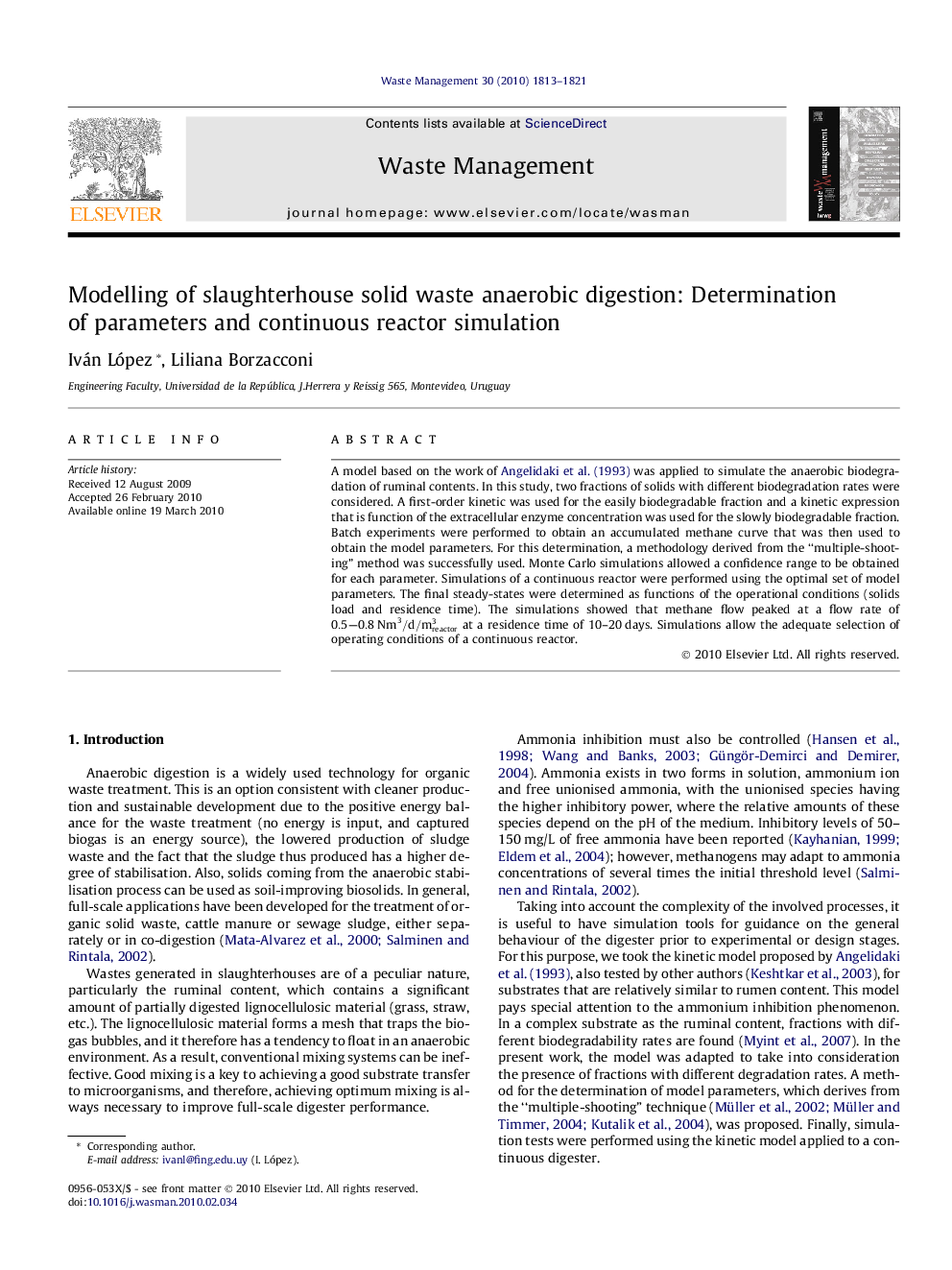| Article ID | Journal | Published Year | Pages | File Type |
|---|---|---|---|---|
| 4472687 | Waste Management | 2010 | 9 Pages |
A model based on the work of Angelidaki et al. (1993) was applied to simulate the anaerobic biodegradation of ruminal contents. In this study, two fractions of solids with different biodegradation rates were considered. A first-order kinetic was used for the easily biodegradable fraction and a kinetic expression that is function of the extracellular enzyme concentration was used for the slowly biodegradable fraction. Batch experiments were performed to obtain an accumulated methane curve that was then used to obtain the model parameters. For this determination, a methodology derived from the “multiple-shooting” method was successfully used. Monte Carlo simulations allowed a confidence range to be obtained for each parameter. Simulations of a continuous reactor were performed using the optimal set of model parameters. The final steady-states were determined as functions of the operational conditions (solids load and residence time). The simulations showed that methane flow peaked at a flow rate of 0.5–0.8Nm3/d/mreactor3 at a residence time of 10–20 days. Simulations allow the adequate selection of operating conditions of a continuous reactor.
